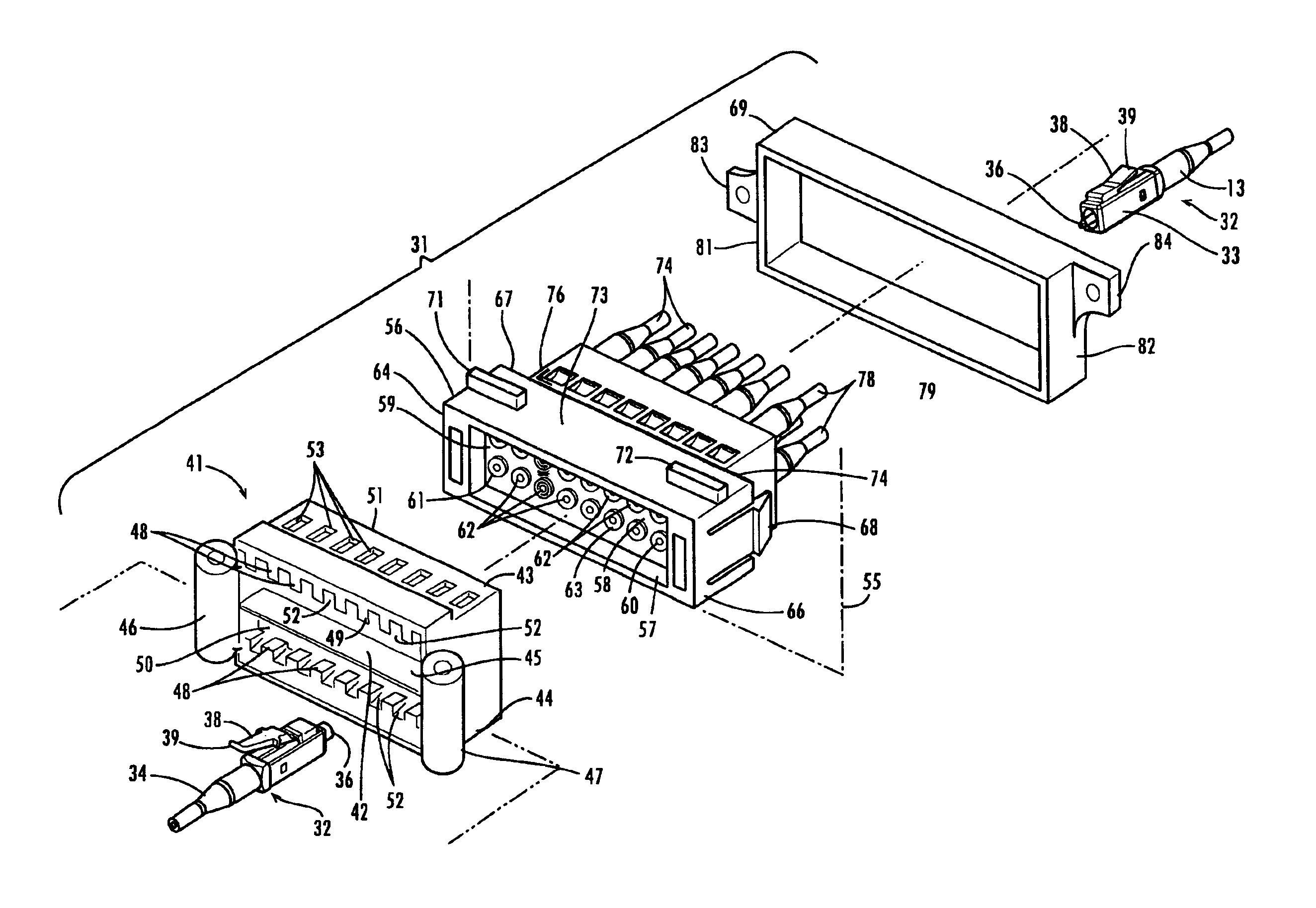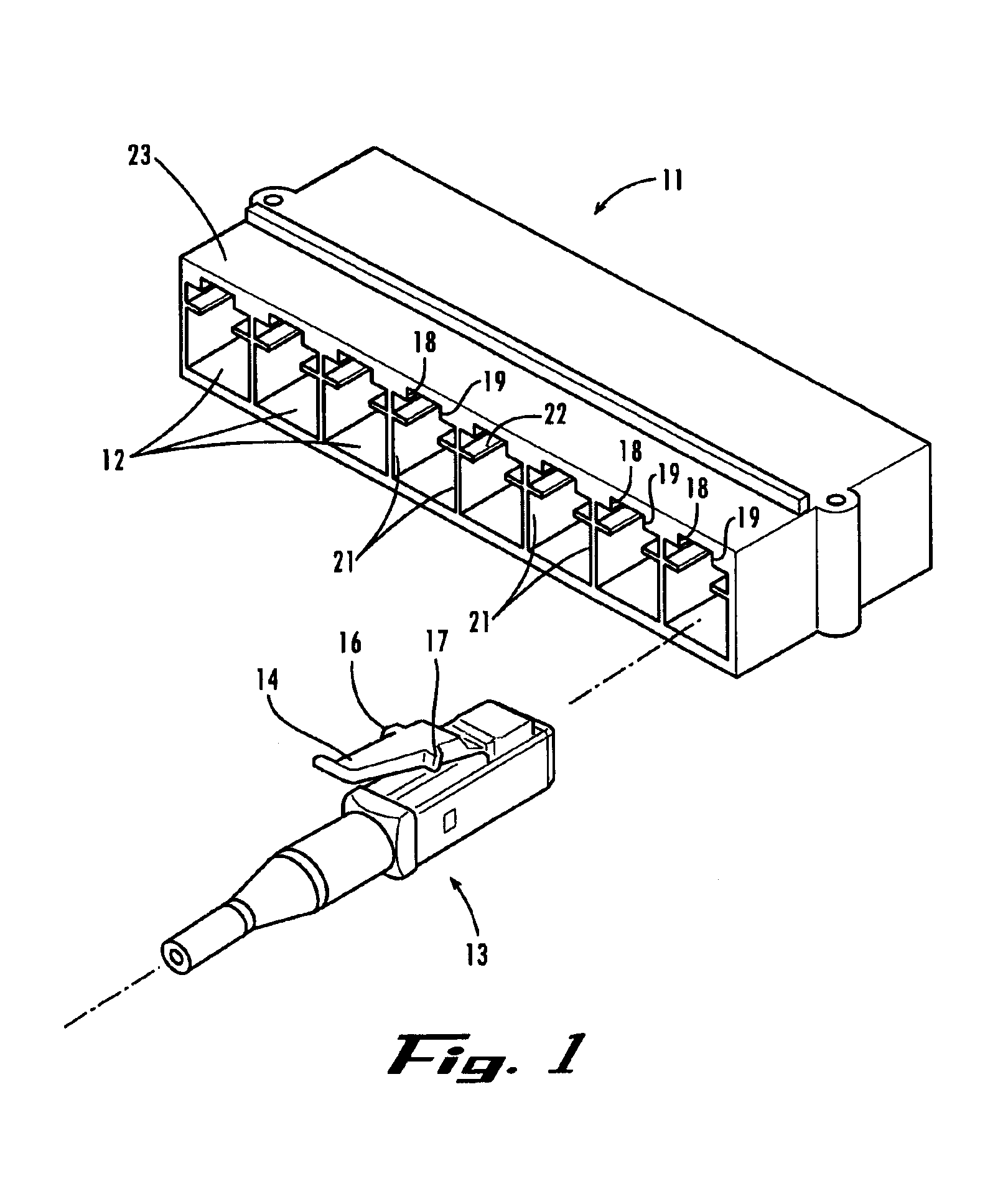High density modular backplane connector for fiber optics
a fiber optics and backplane technology, applied in optics, instruments, optical light guides, etc., can solve the problems of limiting the distribution potential of the system, the hardware of the optical connecting device needs to be sufficiently small, and the construction of the connector is relatively complex
- Summary
- Abstract
- Description
- Claims
- Application Information
AI Technical Summary
Benefits of technology
Problems solved by technology
Method used
Image
Examples
Embodiment Construction
[0020]FIG. 1 illustrates an eight apertured adapter 11, which generally is mounted on the backplane panel, not shown, as is illustrated in U.S. Pat. No. 6,402,393B1 of Grimes, et al., the disclosure of which is incorporated herein by reference, but which may, instead, be mounted on the PCB (not shown), provided the backplane has mounted thereon a mating structure. Each of the eight apertures 12 is adapted to receive a standard LC connector 13 which has a resilient cantilevered latching arm 14, equipped with first and second latching lugs 16 and 17 which are adapted to latch to latching ridges 18 and 19 extending from the walls 21 of each of the apertures 12 when the connector 13 is inserted therein. In the case where adapter 11 is mounted on the backplane, the connectors 13 are mounted on the PCB in a manner such as is shown in the Grimes et al patent, spaced to match the spacing of the apertures 12 in adapter 11. As can be seen in FIG. 1, each of the apertures 12 has a channel 22 t...
PUM
 Login to View More
Login to View More Abstract
Description
Claims
Application Information
 Login to View More
Login to View More - R&D
- Intellectual Property
- Life Sciences
- Materials
- Tech Scout
- Unparalleled Data Quality
- Higher Quality Content
- 60% Fewer Hallucinations
Browse by: Latest US Patents, China's latest patents, Technical Efficacy Thesaurus, Application Domain, Technology Topic, Popular Technical Reports.
© 2025 PatSnap. All rights reserved.Legal|Privacy policy|Modern Slavery Act Transparency Statement|Sitemap|About US| Contact US: help@patsnap.com



